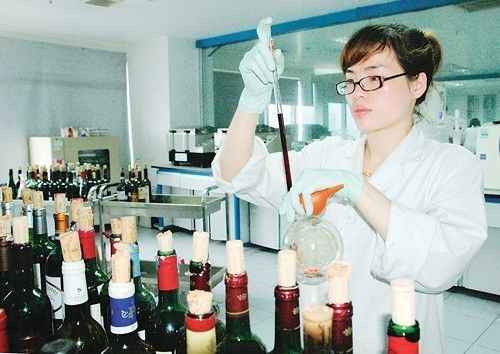Imported Wine Label May not Indicate Dry or Medium Dry

Write | WBO Morris Translate and Edit | WBO Kiwi
News came that wine types (dry or medium dry) will not inspected and marked on the back label compulsively.
Is that the case? What are the benefits of the new regulations to imported wines?
Guangzhou: no compulsive labeling of wine types
Recently, WBO detected Zhang Qiang, a vintner in Guangzhou, released a message in his Wechat moments: Wine type is allowed not be marked on the back label in Chinese from August.
Meanwhile, if the wine type not show on the back label, such wine doesn't need to detect the total sugar and total acid, also not need to pay for the cost on inspection.
According to Zhang, the new regulation was announced by Guangzhou Commodity Inspection and Testing Bureau in August, and Shenzhen port has begun to implement this for a while.
But if importers would like to mark as before, they still have to do the physical and chemical indicators for testing following national standards.
Mina Fung, imports director of VITA Wines in Guangzhou, also said she was informed verbally in August. It is now in operation.
Wine types can be hidden when declaring to the Custom, but Chinese name should be in line with its type. For example, if you write “dry red” in the back label in Chinese, you must go through the sugar and acid testing.
In another province, an insider who familiar with the relevant laws and regulations of import and export inspection, told WBO: Wine type testing has become an optional project (not a must project). That’s to say, if importer will not mark this information on label, he doesn’t need to do the testing.
More flexible, reduced unnecessary trivial segment
Through Zhang’s analysis, wine types used to plagued many importers and distributors.
In foreign countries, percentage of sugar and acid content is due to the winery and winemaker's taste setting for this wine, not making wines following such type principle deliberately.
Many entry-level wines tend to be somewhere between dry and medium dry for better tastes. This makes it difficult for vintners to identify wine types, and also increases the workload for importers and inspection departments.
Take Shanghai port for example, once wine sampling testing of total sugar and total acid detect inconsistent with what writes on the Chinese label, the wine will be required to complete the rectification within the prescribed time and go to next step after retest.
This will undoubtedly lead to a series of costs arising, such as labeling, rectification, warehousing and sales delay, according to WBO.
Similarly, wine types can interfere with the market order.
On account of the transition from sweet wine to dry wine over the past ten years, dry wine advantages have been over promoted by vintners. Some consumers wrongly believed that dry wine is good and medium dry is bad.
However,in foreign countries, many entry-level wines are medium dry. “This change is undoubtedly a big step forward.” Zhang said, “Product type has nothing to do with the environmental protection and food safety, so there is no need to force them to write.”
This adjustment reduces troubles, unnecessary works, and provides a mature guidance for consumers.
Undoubtedly, there are importers that insist on writing wine types. Customers will mistakenly consider this bottle of wine containing sugar if not mark dry red on the label.
Shanghai and Ningbo ports have not yet been implemented
Qiao Wenting, Sales manager of Shanghai Wenran Shipping, introduced: there are no similar provisions in Shanghai at present, this might be only implemented in Guangzhou locally.”
“From the beginning of August, wine label became an optional choice when registering, but they have to prepare documents as before.” said Li Jun, representative of Shanghai Lyseo.
The same as in Shanghai, Ningbo port didn't make any changes in imports regulations, confirmed by Ge Zhengbo, general manager of a Supply Chain company.